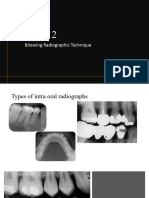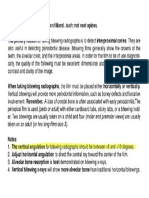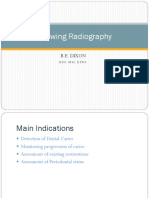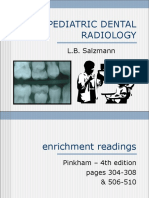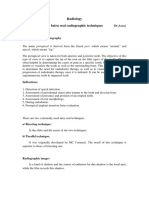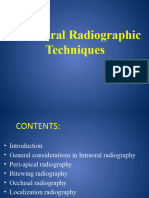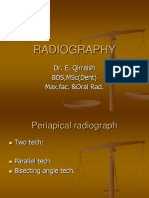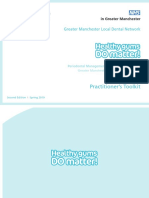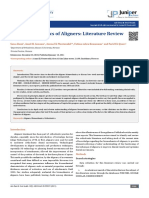0% found this document useful (0 votes)
227 views23 pagesDental Radiography Guide
Bitewing radiographs are used to detect interproximal caries and evaluate periodontal status and restorations. The film is placed parallel to the crowns of the upper and lower teeth and stabilized when the patient bites down on the tab. The x-ray beam is directed through the tooth contacts using a positive vertical angulation. Patient preparation includes a lead apron and removing appliances. The image provides detail of the interproximal areas that cannot be seen clinically.
Uploaded by
AhmadCopyright
© © All Rights Reserved
We take content rights seriously. If you suspect this is your content, claim it here.
Available Formats
Download as PPT, PDF, TXT or read online on Scribd
0% found this document useful (0 votes)
227 views23 pagesDental Radiography Guide
Bitewing radiographs are used to detect interproximal caries and evaluate periodontal status and restorations. The film is placed parallel to the crowns of the upper and lower teeth and stabilized when the patient bites down on the tab. The x-ray beam is directed through the tooth contacts using a positive vertical angulation. Patient preparation includes a lead apron and removing appliances. The image provides detail of the interproximal areas that cannot be seen clinically.
Uploaded by
AhmadCopyright
© © All Rights Reserved
We take content rights seriously. If you suspect this is your content, claim it here.
Available Formats
Download as PPT, PDF, TXT or read online on Scribd
/ 23







